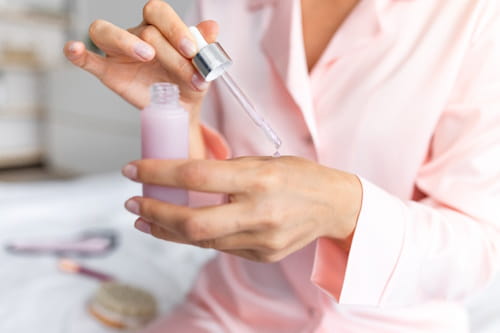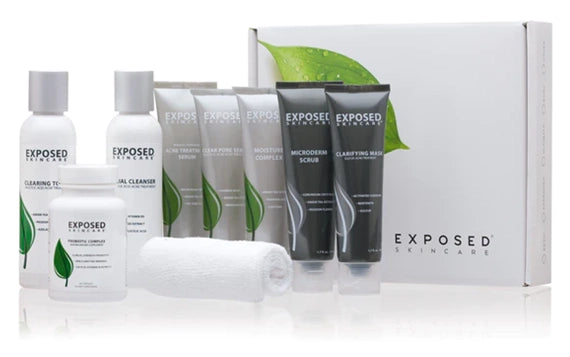Hair follicle acne, or folliculitis, is a skin condition that can be uncomfortable and unsightly. It occurs when hair follicles become inflamed, leading to red, pus-filled pimples.
This condition can affect anyone at any age, manifesting anywhere on the skin where hair grows. Understanding the causes, symptoms, and treatment options for hair follicle acne is crucial for effective management and prevention.
Also read: How to choose the best acne treatment
What is Hair Follicle Acne?
Understanding the Basics
Hair follicle acne, or folliculitis, is a common skin condition that occurs when the hair follicles become infected and inflamed. This condition often presents as small, red, pus-filled pimples and can occur anywhere on the body where hair grows.
Types of Folliculitis
- Superficial Folliculitis: Affects only a part of the hair follicle.
- Deep Folliculitis: Involves the entire hair follicle and can be more severe.
Causes of Hair Follicle Acne
Identifying the Root Causes
Folliculitis can be caused by a variety of factors, including:
- Bacterial Infections: Often due to Staphylococcus aureus.
- Fungal and Yeast Infections: Leading to types like eosinophilic and gram-negative folliculitis.
- Viral Infections: Though less common.
- Damaged Hair Follicles: Caused by friction from tight clothes or shaving.

Symptoms and Causes of Hair Follicle Acne
Recognizing the Signs
Common symptoms of folliculitis include:
- Itchy, red bumps
- Pus-filled pimples
- Pain and tenderness
- Hair loss in severe cases
Common Causes
- Shaving and Hair Removal: This can damage follicles and ingrown hairs.
- Hot Tub and Chlorine Levels: Hot tub folliculitis is caused by bacteria found in poorly maintained water.
- Wearing Tight Clothing: Can irritate and damage hair follicles.
- People with Curly Hair: At higher risk due to the nature of hair growth.
Treatment Options for Hair Follicle Acne
Navigating Treatment Pathways
- Antibiotics: For bacterial folliculitis.
- Antifungal Treatments: For fungal-induced conditions.
- Warm Compresses: To soothe inflammation and promote healing.
- Over-the-Counter Solutions: Like benzoyl peroxide, to treat acne-like symptoms.

Preventing Hair Follicle Acne
Proactive Measures
- Avoid Shaving: Use electric razors to minimize irritation.
- Maintain Hygiene: Regular washing with gentle products.
- Wear Loose Clothing: To reduce friction on the skin.
- Monitor Hot Tub Use: Ensure proper chlorine levels and cleanliness.
When Hair Follicle Acne Isn't Just Acne
Differential Diagnosis
It's crucial to differentiate between hair follicle acne and other conditions like an acne breakout or a yeast infection. While they may look similar, the underlying causes and treatment approaches can significantly differ.
Complications of Hair Follicle Acne
Understanding the Risks
If left untreated, folliculitis can lead to more severe issues like boils and carbuncles, deep infections, and scarring.

Exploring Severe Cases
Deep folliculitis, affecting the entire hair follicle, can result in deeply infected boils or carbuncles. These require more intensive treatment and can cause significant discomfort.
Living with Hair Follicle Acne
Managing Day-to-Day Life
Living with folliculitis means being mindful of daily habits, from the choice of clothing to personal hygiene practices. It's about balancing treatment and preventive measures to maintain skin health.
The Role of Hair in Folliculitis
How Hair Affects the Condition
Different hair types and removal methods can influence the risk and severity of folliculitis. People with curly hair or those who shave frequently may be more prone to this condition.
The Benefits of Exposed Skin Care in Managing Acne
Exposed Skin Care products offer numerous benefits for managing conditions like acne and even helping to prevent folliculitis.
Here's how Exposed Skin Care can be a game-changer:
- Effectively Treats Pus-Filled Acne: The unique formula in Exposed Skin Care products targets pus-filled pimples, a common characteristic of acne, reducing inflammation and promoting healing.
- Prevents Razor Bumps: For those suffering from pseudofolliculitis barbae, often aggravated by shaving, Exposed Skin Care helps soothe the skin and reduce the occurrence of these frustrating bumps.
- Helps Prevent Folliculitis: By maintaining clean and balanced skin, Exposed Skin Care products reduce the risk of developing folliculitis, a common cause of which is bacterial infection.
- Soothes Skin Conditions: Those with conditions like pseudomonas folliculitis or a rash that may look like acne can find relief through the gentle yet effective ingredients in Exposed Skin Care, which help calm the skin.
- Ideal for Sensitive Skin: The products are formulated to be gentle on the skin, making them suitable for those who experience irritation from harsher acne treatments.
- Enhances Skin Hydration with Warm Water: When used in conjunction with warm water, Exposed Skin Care products help deeply clean the skin and remove impurities while retaining essential moisture.
Incorporating Exposed Skin Care into your routine can significantly impact your skin's health, particularly if you're prone to acne or related conditions like barbae and folliculitis.
Conclusion
Folliculitis, often misunderstood and mistaken for other skin conditions, can significantly impact one's quality of life. This hair follicle infection, which causes itchy and inflamed skin, happens when a hair follicle becomes infected.
The two main types of folliculitis, superficial and deep, each bring their own challenges and require specific approaches to diagnosis and treatment. Understanding the causes of folliculitis is crucial.
It's a condition that could be folliculitis if one notices symptoms like red, pus-filled bumps in the beard area or anywhere hair grows back into the skin. This form of folliculitis, caused by various bacteria or fungi, can lead to more severe complications if not properly addressed.
Learning about folliculitis helps in recognizing its early signs and seeking appropriate treatment. While mild folliculitis often resolves on its own, more severe cases, such as eosinophilic folliculitis or certain types of folliculitis due to a specific infection, require medical intervention.
The diagnosis of folliculitis is primarily based on the clinical appearance and history of the patient. It's essential to understand that while folliculitis isn't always severe, neglecting it can lead to infected hair follicles becoming deeply inflamed.
Thus, early diagnosis and understanding the risk for folliculitis are key. In managing folliculitis and helping to treat acne, products like Exposed Skin Care can be beneficial.
Their formulations are designed to target the inflammation of the hair follicles and soothe the skin, reducing the chances of aggravating the condition. Exposed Skin Care, focusing on balancing the skin's health, can be an effective part of the treatment plan for folliculitis and overall skincare routine.
FAQs
What Is Hair Follicle Acne?
Hair follicle acne, or folliculitis, is a skin condition where hair follicles become inflamed and infected, often resulting in red, pus-filled bumps.
What Causes Hair Follicle Acne?
Bacterial or fungal infections commonly cause it, as well as damaged hair follicles due to shaving or wearing tight clothes and certain skin conditions.
How Can Hair Follicle Acne Be Treated?
Treatment options include antibiotics for bacterial infections, antifungal medications, warm compresses, and over-the-counter treatments like benzoyl peroxide.
How Can I Prevent Hair Follicle Acne?
Prevention methods include avoiding shaving irritation, maintaining proper hygiene, wearing loose clothing, and ensuring clean and well-maintained hot tubs.
How Can Exposed Skin Care Help With Hair Follicle Acne?
Exposed Skin Care products are designed to target acne and related skin conditions. They help reduce inflammation, prevent infection, and soothe the affected areas.



















